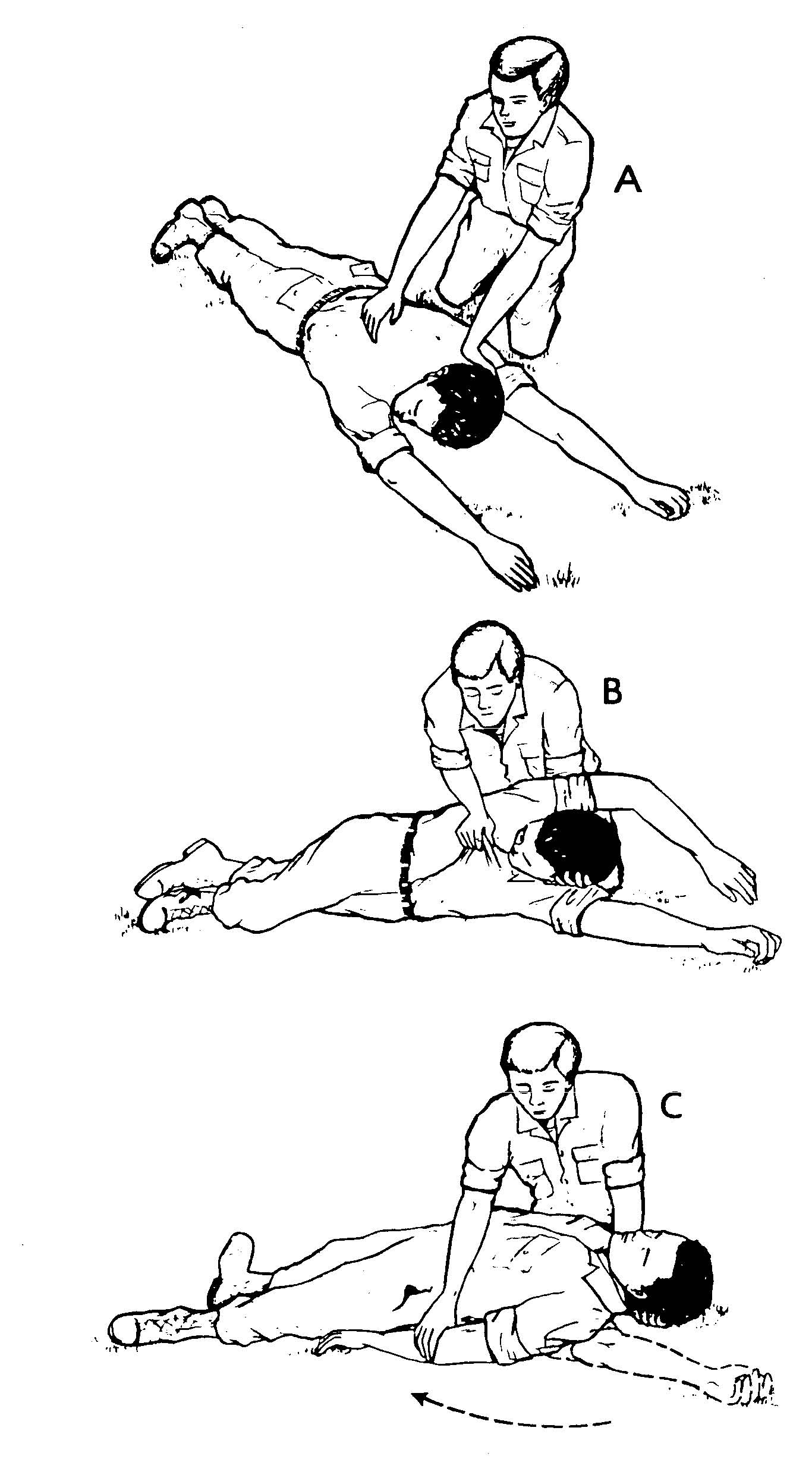Cardiopulmonary Resuscitation
LESSON 3: INITIATE RESCUE BREATHING ON AN ADULT
3-5
3-5. POSITION THE CASUALTY
Position the casualty flat on his back and on a hard surface. Rescue breathing is most effective when the casualty is lying on his back. Chest compressions (part of CPR) are not effective unless the casualty is lying on his back and lying on a hard surface.
a. If the casualty is lying on a bed or cot, remove the casualty from the bed or cot and place him on the floor or ground. An alternative is to place a bed board or long backboard between the casualty's back and the bed or cot.
b. If the casualty is lying on the ground in a supine (on his back) position, place his arms at his side and proceed to establish an open airway.
c. If the casualty is lying on solid ground in a prone (on his chest) position, turn him onto his back using the procedures given below. These procedures allow the casualty to be turned as a unit. Turning the casualty as a unit minimizes the likelihood that existing injuries will be aggravated, and also minimizes the chances that the head or neck will be injured during the turning. It is especially important to use these procedures if you suspect that the casualty has a spinal injury.
(1) Straighten the casualty's legs.
(2) Kneel beside the casualty. Your knees should be near his chest area, but there should be enough space between you and the casualty for you to roll him onto his back.
(3) Take one of the casualty's arms and move it so that the arm is straight and above his head. Then move his other arm so that it is also straight and above his head.
(4) Support the casualty's head and neck by placing your hand that is nearest his head on the back of his head (figure 3-1A).
(5) With your other hand, reach across the casualty's back and grasp the casualty's uniform under his far arm.
(6) Pull on the casualty's uniform and roll the casualty toward you (figure
3-1B). Use a steady and even pull so that the casualty's head and neck stay in line with his back. (If you have a person to assist you, have the person to help roll the casualty's hips and legs.)
(7) Once the casualty is lying flat on his back, return the casualty's arms to his side (figure 3-1C). If his legs are crossed, uncross them.
Figure 3-1. Rolling a casualty onto his back.


